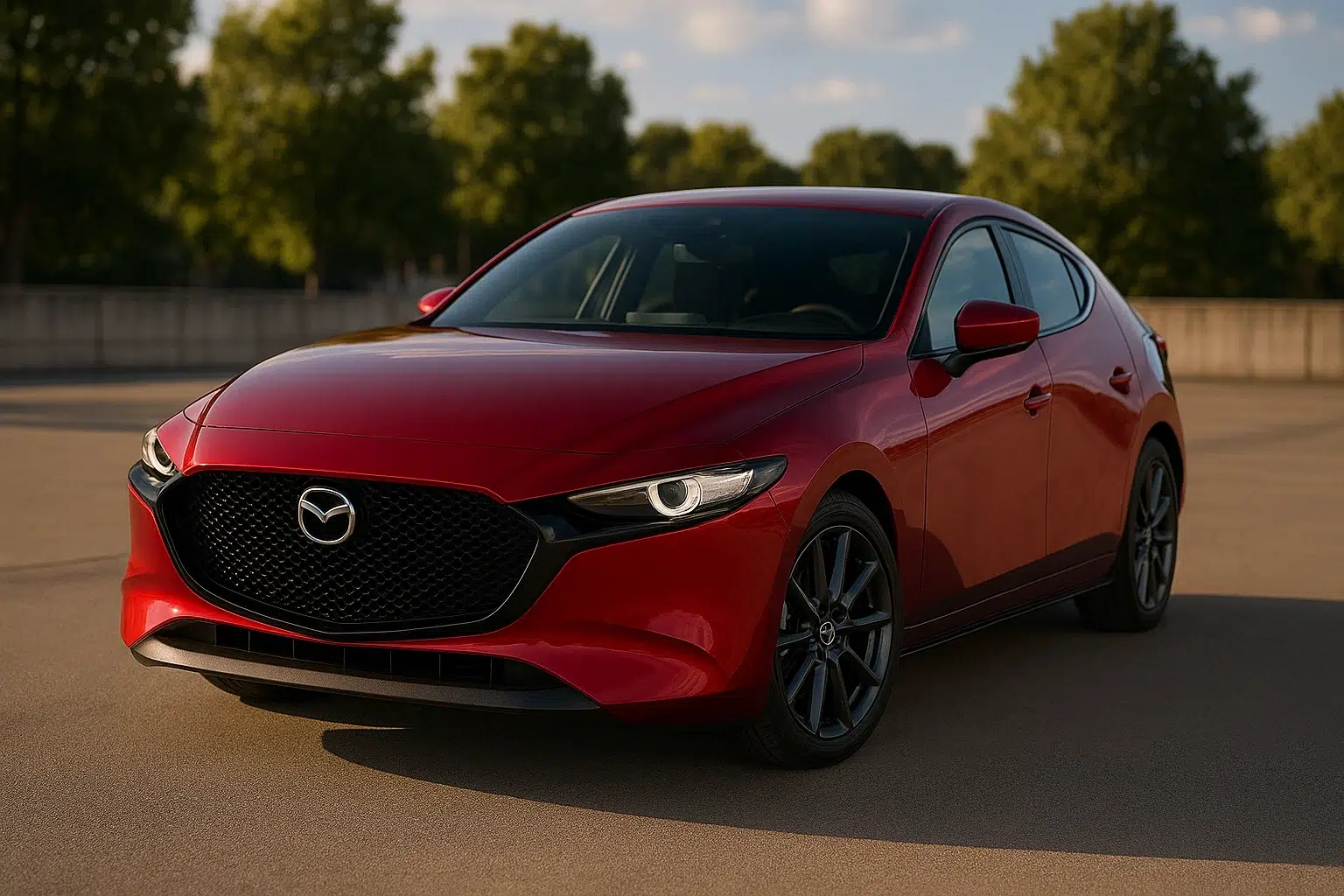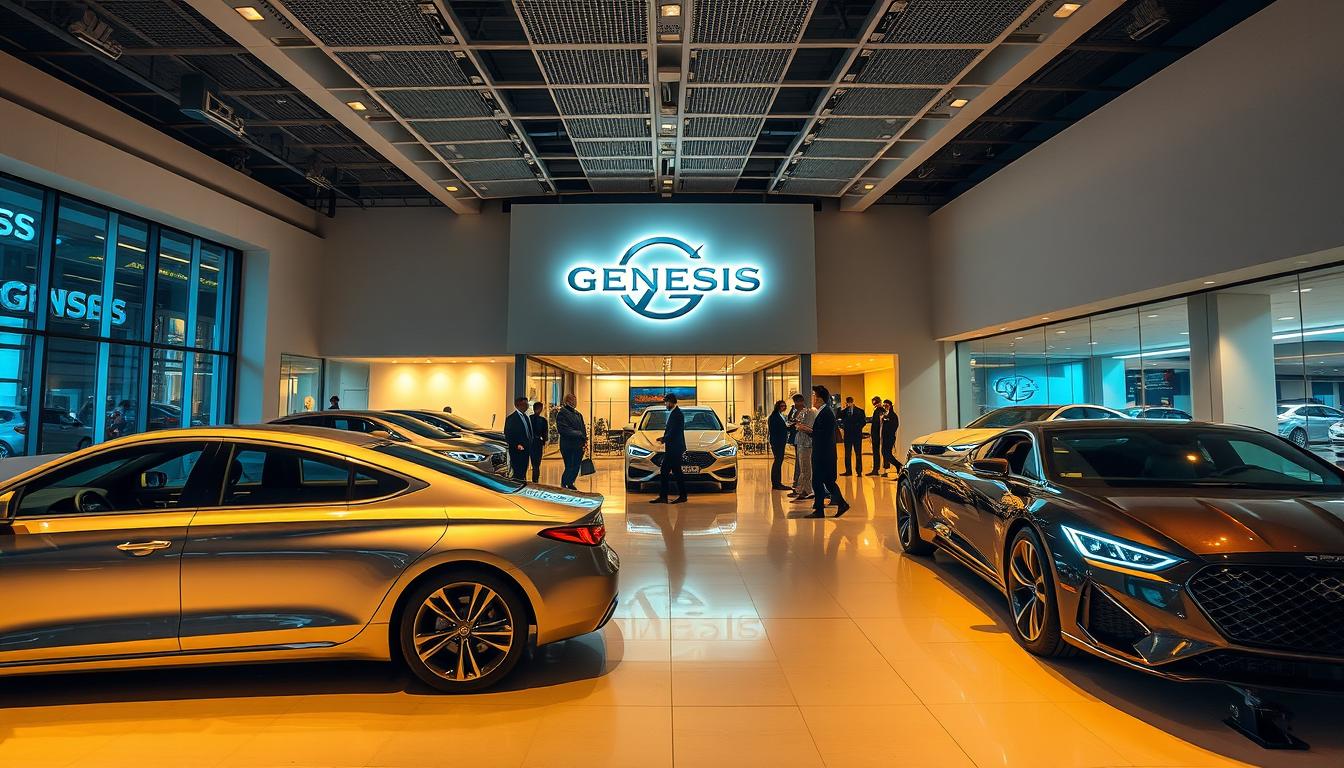Mazda is an independent Japanese automaker. However, Toyota owns a minority stake of about 5%.
Mazda is well-known throughout the world for their vehicles which are renowned for being sporty, innovative, and fuel-efficient. However, who owns Mazda? Over time, a small cork manufacturing company has transformed into one of the most reputable automotive companies in the world. This article provides information on ownership structure, manufacturing lineage, collaboration policy, production in America, and what lies ahead. Furthermore, we will answer questions like ‘is Mazda foreign car’ and ‘who makes Mazda’ so that you gain a more complete understanding.
Who Owns the Mazda Car Company?
To begin, who owns the Mazda car company today? Contrasted with certain global automotive manufacturers, Mazda Motor Corporation continues to operate as an independent publicly traded corporation headquartered in Hiroshima, Japan. Its stocks are listed and can be traded on the Tokyo Stock Exchange marked as 7261. The stockholders include a combination of institutional shareholders, Japanese pension funds alongside major business associates.
As part of a strategically collaborative deal, Toyota Motor Corporation became one of the single largest shareholders by acquiring approximately 5% stake in Mazda in 2017. Nonetheless, neither does Toyota own any portion of Mazda nor cars manufactured by them; rather Mazda retains full autonomy over its operations and brand strategy. Another important shareholder is Sumitomo Mitsui Trust Bank, classified as a Japanese institutional investor. So regarding who owns Mazda cars? In principle anyone who buys their cars controls it but from a governance perspective they are categorized under publicly held corporations without a sole owner but with selective partnership joint interests.
History: Who Owned Mazda in the Past?
Mazda has not always been as stable an independent brand as it is today. To answer who owned Mazda in earlier eras, we have to go back to the 1920’s. Founded in the year 1920, Toyo Cork Kogyo Co., Ltd was transformed into an automotive company during the 1930’s. In the post World War II period, Mazda emerged as a small one of the many Japanese automakers.
These are two decades which brought many distinct owners and mergers on board. Most prominently in 1979, is Mazda still owned by Ford? The answer is no today: But for more than two decades, between 1979 and 2015, New York‑based Ford Motor Company held a controlling stake over Mazda. With these services came some other benefits too. Ford aided in growing Mazda’s global presence towards leading countries while sharing important vehicle platforms. That said, Mazda retained a fair amount of autonomy in design and engineering. Between 2008 and 2015 Ford gradually reduced his stake until he had no shares left and finally regained full independence by then.
Where Is Mazda Made?
You’ve likely asked yourself, where is Mazda made? Hiroshima, Japan still serves as Mazda’s primary center for research and development as well as manufacturing. It is the center of their vehicle production and development. This location manufactures models such as the Mazda MX‑5 Miata and also produces the iconic CX-5 crossover.
In addition to Japan, other countries where Mazda has production plants include Santa Ana in Mexico, Thailand, China, Vietnam, and India. Also located in North America are collaborative plants with Toyota. Thus, if you’re asking “Where are Mazdas manufactured?”, it varies depending on the model and market region—regardless, we can say that Mazda truly is an international automaker.
U.S. Production History
U.S. Production History of Mazda is a fascinating story. Mazda made its first inroads into U.S. manufacturing in 1987 with a joint venture called AutoAlliance International in Flat Rock, Michigan. Here, Mazda produced the Mazda6 (then called 6 at the time) alongside select Ford models.
That plant became known for quality and efficiency. While Mazda eventually reduced operations at that location, this move marked a turning point—it demonstrated that Mazda could produce cars to suit American preferences on U.S. soil. The company has since sold various models like the Mazda3, Mazda5, and CX‑9 in the U.S., though production has primarily returned to Japan and Mexico.
The Popularity of Mazda Models
Mazda vehicles are recognized for their bold aesthetics and engaging driving dynamics. Models such as the MX-5 Miata, Mazda3, CX-5, and CX-90 have achieved both critical and commercial success.
- MX‑5 Miata: A lightweight roadster loved for its pure handling, praised widely for its joy-to-drive factor.
- Mazda3: A compact car offered as a sedan or hatchback; it has won accolades for its interior quality and economical engines.
- CX‑5: A sleek compact crossover that offers an elegant design while also balancing practicality with drive enjoyment.
- CX‑90: An enlarged three-row SUV tailored to American families equipped with refined powertrains along with luxury touches.
Such models assist in answering is Mazda foreign car? Yes, being Japanese makes it technically foreign, but its American-made variations appeal locally. These Mazdas embody Japanese engineering while being tailored to consumer preferences.
Mazda Manufacturer: Who Makes Mazda?
Addressing the case of the Mazda manufacturer directly, who makes Mazda cars? Each design, engineering, and branding activity is done by The Mazda Motor corporation. Assembly through Company’s facilities and strategic partners.
For questions pertaining to who makes the car models sold in America, they would be made either in Mexico (Salvador, Mexico plant) or Japan. Collaborative Manufacturing agreements are common at Toyota; it operates a plant for the production of Corolla Cross and Mazdas CX-50 with Mazda. As such, when someone asks who makes mazda, the answer is clear: “Mazda manages everything but relies on joint partnerships and contracting where it is useful.”
Mazda and Toyota: A Strategic Partnership
The keyword Mazda and Toyota a strategic partnership reveals one of the most important strategy shifts in Mazda history. The partnership spans several areas:
- Cross‑shareholding: In 2017, Toyota made Mazda’s first strategic investment by acquiring a 5% stake in Mazda, and Mazda purchased a 0.25% stake in Toyota. This proved both companies’ intention to collaborate long-term.
- Joint manufacturing: The shared Alabama plant will produce the Toyota Corolla Cross and Mazda CX-50 targeting the mid-size crossover segment of US suvs.
- EV development: Toyota and Mazda are working together on an EV platform for North America which will integrate pilot auto technology from Toyota as well as Skyactiv powerplants from Mazda.
Everywhere one looks, this partnership resolves the query Toyota Mazda as a joint venture force. It gives Mazda access to Toyota’s competitive safety and EV technology while Toyota gains nimble engineering from Mazda along with di design.
Crafting a Mazda: A Commitment to Quality and Design
How does Mazda guarantee craftsmanship excellence? “Crafting a Mazda: A Commitment to Quality and Design” discusses refinements such as detail-oriented precision, Skyactiv Technology, and Kodo design language.
Mazda applies real aerodynamic science for every curvature and crease of the vehicle. For instance, the vehicle is praised for its almost one-piece hood assembly as well as top trim models with icing like dashboard finishing.
For instance, tip car detailers can share insights about how Mazda interiors resist wear and tear. Cleaning coffee stains involves soft touch material seams that make this very simple while enduring moderate dirt. If a careless passenger decides to eat ramen on route to the airport and vomit mid-flight—yes, guidelines on how to clean up vomit in car are essential. When compared to some cloth rival interiors, Mazda’s non-absorbing materials make recovery faster after spills or odor exposure.
The Popularity of Mazda Models (Revisited)
Previously, we referred to some models, but let us elaborate more. The Popularity of Mazda Models discusses an aesthetic consideration toward sporty driving and Mazda’s memorable designs.
- The CX-5 Mazda is the class leader for quality interiors.
- Mazda3 Turbo gives an exceptional look with top notch feel and performance.
- Mazda6 is popular outside NA despite being discontinued there for some time.
- Emerging market expectations outline the compact electric crossover, The Mazda MX-30 EV, hinting toward Mazda’s future direction for electric vehicles.
Mazda’s refinement and performance features receive great accolades from reviewers without fail. Operating a vehicle reinforced with Mazda’s durability while driving through pouring rain or dusty dry roads is an advanced vehicle experience. However, still some matters such as persistent humidity leading to mold build up in car vents requires owners to maintain proper duct sanitation which ironically, tends to be overlooked but a critical care tip in the world of automotive HVAC systems.
Mazda’s Vision for the Future: Innovation and Sustainability
As the industry transitions, Mazda’s Vision for the Future: Innovation and Sustainability focuses on three core areas.
- Skyactiv‑X and Hybrid Engines: The Skyactiv-X engine utilizes a high-compression system which increases fuel efficiency and torque while postponing complete electrification.
- Electrification Strategy: Instead of completely abandoning traditional vehicles, Mazda follows a progressive approach—from electrified hybrids to plug-in hybrids, followed by fully electric vehicles in collaboration with Toyota using proprietary technology alongside shared platforms.
- Sustainable Materials: In an effort to decrease production lifecycle carbon emissions Mazda is researching bioplastics for interior panels, as well as color pigments from recycled sources.
Mazda cars are thoughtfully disruptive—considered makers—as they balance innovation with brand DNA which reaffirms what sets them apart from competition.
Is Mazda Still Owned by Ford?
For anyone still asking is Mazda still owned by Ford, the straightforward answer is no. As mentioned, Ford started divesting its stake in between 2008 and 2015. By 2015, Ford no longer held any controlling share. Mazda regained complete autonomy and forged a new strategic partnership with Toyota instead.
Still, the emotional connection from Mazda to Ford survives in legacy shares and platforms—early RX‑7s and MX‑6 coupes were products of East-West engineering fusion. Nowadays, however, Mazda’s design decisions and car ownership are no longer influenced by external factors.
Mazda Stock Price and Ownership
Mazda stock price (Tokyo: 7261) reflects investor sentiment. Though modest compared to giants like Toyota (7203), Mazda’s lean structure and creative tech justify its valuation. Strong share performance often parallels quarterly vehicle sales, Japan domestic incentives, exchange-rate swings, and milestones like Toyota alliance announcements.
Automotive sectors that might influence your interests in Mazda’s shares include electric vehicles as well news on earnings reports for the quarter held. The market tends to be rejuvenated by the announcement of cooperative projects between both companies too.
Mazda vs. Chevrolet? The “Chevy Mazda” Misnomer
You might come across the term “chevy mazda” in some forums as a joke or out of producer confusion. Don’t worry—there’s no actual overlap between the brands. A Chevrolet is a GM (General Motors) vehicle, one of the automakers based in Detroit. Mazda has been independent since splitting from Ford, so he has no ties to GM. The only “Chevy Mazda” that shows up on Google might be some used-car ad with a wrong label, or maybe there’s some confusion from decades-old re-badged SUVs sold in emerging markets. Rest easy knowing that the answer to ‘Mazda owned by who?’ is and always will be Toyota ties without GM involvement.
Is Mazda a Foreign Car to U.S. Buyers?
That brings us back to the conversation: is Mazda a foreign car? Yes, it is Japanese. However, with manufacturing plants in Mexico and the joint venture plant in Alabama, a lot of Mazdas sold in the U.S. are manufactured outside Mazda’s Japan headquarters but still under Mazda’s umbrella. This helps with meeting safety regulations for the U.S., emissions requirements, and construction quality standards.
Mazda’s Commitment to Customer Care
Mazda’s customers seem to be happy. Dealers get compliments for how well they maintain vehicles and for their good service over time. That being said, like with any car maintenance, there may be Mazda specific problems—gravel scratches needing car scratch repair, seat mold requiring fabric cleaning tips, or coffee stain removal on upholstery.
Mazda encourages use of OEM parts and certified workshops which aids in maintaining dealership standards for aftermarket services. Putting oil, replacing brake pads, as well as checking for pot hole damage are all within Mazda’s Quality focus and calibrate nationally retained benchmarks.
Mazda’s Outlook: From Corporate Vision to Consumer Reality
In the last part, Mazda’s Vision For The Future and Conclusion: What Makes Mazda Unique serves as a summary.
- Mazda gives customers the high-drive feel, nice to look at, and better fuel or EV efficiency over time.
- Strategic partnerships with Ford and now Toyota keep things working for Mazda and make it up to date.
- Going public offers shared risk along with transparency and broad ownership. Buyers and investors know who owns mazda company. It’s you and major global shareholders.
Mazda stands out by not chasing losing motor character volume. When you drive one of their cars, it’s not an appliance. Instead, you feel Jinba Ittai—it’s you and the car as one.”
Conclusion: Why Mazda Stands Out
Here’s why Mazda stands out:
- Having autonomy while being interconnected: Continuously operating independently allows Mazda to maneuver quickly through partnerships.
- Exemplary design: Compact sedans and SUVs are characterized by Kodo aesthetics, which offer premium interiors that stand out from the norm.
- Driving excellence: Even the economy model vehicles have engaging acceleration due to Skyactiv technology, tuned suspensions, and other enhancements.
- Adaptive creativity: The essence of Mazda remains intact as they hybrids and their later plans for EVs.
- Track record: Past alliances with Ford and the recently renewed partnership with Toyota showcases how thoughtfully Mazda designs their vehicles.
In responding to who owns Mazfa (sic), I assume this lengthy response serves its purpose – publicly traded, strong institutional investors alongside a strategic partner in Toyota. So no one else “owns” Mazda.

I am Tushar Balchandani, founder of Car Info Expert and someone who has been working extensively in the car industry as a car expert for 15 years. My aim is to provide useful truthful and reliable information to the readers based on my real experiences and hands-on experience. From buying tips to maintenance guides, I help readers make confident car-related decisions.




